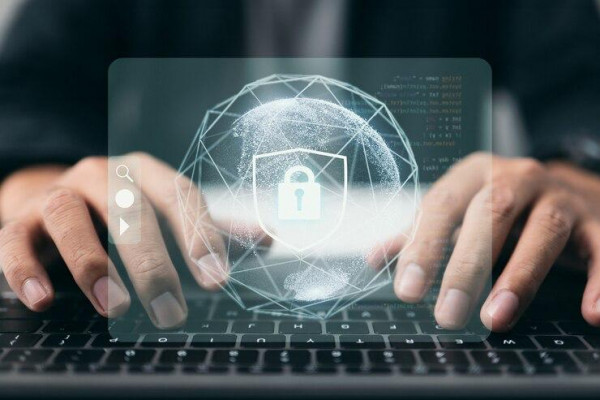Introduction
In an era marked by escalating digital threats on a global scale, orchestrated by sophisticated hackers and cyber criminals, the imperative to prepare for, respond to, and recover from cyber-attacks has never been more crucial. The cyber resilience service line is devoted to cultivating and strengthening these essential capabilities, guaranteeing that organizations can shield themselves against cyber risks, thwart and minimize the impact of attacks, and secure ongoing viability in the aftermath of cybercrime.
As conventional cybersecurity measures prove increasingly inadequate in safeguarding organizations against persistent and sophisticated attacks, resilience emerges as the cornerstone for establishing a more secure and dependable digital business environment.
What is Cyber resilience
Cyber resilience encompasses an organization’s capacity to bounce back from a successful cyber-attack while minimizing business disruption, regulatory conflicts, and reputational damage.
Cyber resilience involves orchestrating security through a comprehensive approach that encompasses people, processes, and technology. While correlating security intelligence is pivotal, equally significant is elevating employees’ security awareness to empower better decision-making and mitigate risky behavior. This broadened perspective aims to bridge the cyber gap between IT and business, compelling both sides to align proactively and present a unified front against threats and incursions.
A paramount aspect of cyber resilience is the notion that an organization strategically deploys its assets—ranging from people and information to technology and facilities—in support of specific operational missions, defining the organization’s scope and day-to-day business.
5 key steps to be cyber resilient
To achieve the required level of awareness and resilient response the following basic steps should be followed:
Comprehensive Risk Assessment:
The first step in building a cyber-resilient organization is to conduct a comprehensive risk assessment. This involves identifying and evaluating potential vulnerabilities, threats, and risks across the organization’s digital infrastructure. By analyzing existing security protocols, data assets, and potential points of entry for cyber-attacks, organizations can gain a clear understanding of their current security posture. This assessment should encompass internal and external factors, including employee practices, third-party dependencies, network architecture, and regulatory compliance.
Robust Security Policies and Procedures:
- A cyber-resilient organization recognizes that its employees play a crucial role in its cybersecurity posture. Human error is a significant contributor to security breaches, so implementing robust security policies and providing comprehensive employee training is paramount.
- Start by developing clear and enforceable security policies that cover areas such as password management, data handling, and acceptable use of company resources. Ensure that employees are educated about the latest cybersecurity threats, phishing scams, and social engineering tactics.
- Regular training sessions and simulated phishing exercises can help employees recognize and respond to potential threats effectively. Additionally, fostering a culture of cybersecurity awareness ensures that security is not seen as solely the responsibility of the IT department but is embraced by every member of the organization.
Advanced Threat Detection and Response: Stay One Step Ahead:
- Given the evolving nature of cyber threats, organizations need to adopt advanced threat detection and response mechanisms. Traditional antivirus solutions are no longer sufficient to protect against sophisticated attacks. Implementing next-generation cybersecurity tools that leverage artificial intelligence and machine learning is crucial.
- Invest in intrusion detection systems, endpoint protection, and security information and event management (SIEM) solutions. These technologies can detect anomalies, identify potential threats in real time, and enable a swift response to mitigate the impact of a cyber incident.
- Collaborate with threat intelligence sharing communities and stay informed about emerging threats and vulnerabilities. Proactive threat detection and response capabilities are essential elements of a cyber-resilient organization.
Robust Data Backup and Recovery Plans and Business Continuity Planning:
No organization is immune to cyber incidents. However, a cyber-resilient organization is prepared to respond effectively and recover quickly. Robust data backup and recovery plans are integral components of this preparedness.
- Regularly back up critical data, ensuring that backups are stored securely and can be quickly accessed in the event of a cyber incident. Implement a data recovery plan that outlines the steps to restore systems and operations efficiently. Regularly test your backup and recovery processes to identify any potential weaknesses and address them promptly.
- By having a well-defined and tested data backup and recovery strategy, your organization can minimize downtime, reduce the impact of data breaches, and maintain business continuity in the face of cyber threats.
- Preparing for potential cyber incidents is a critical aspect of building cyber resilience. Organizations should develop comprehensive incident response plans that outline clear procedures for addressing security breaches, mitigating damage, and restoring normal operations.
- Additionally, establishing robust business continuity and disaster recovery strategies is essential to minimize downtime and maintain operational continuity in the event of a cyber-attack. Regular testing and refinement of these plans are imperative to ensure their effectiveness and relevance in the face of evolving cyber threats.
Collaboration and Continuous Improvement:
- Building cyber resilience is an ongoing process that requires continuous monitoring, assessment, and improvement. Regularly review and update your cybersecurity policies and procedures to address emerging threats and technological advancements. Conduct periodic risk assessments to identify new vulnerabilities and assess the effectiveness of your cybersecurity measures.
- Implement a continuous monitoring strategy that includes real-time threat intelligence feeds and regular security audits. This proactive approach allows your organization to adapt quickly to the evolving threat landscape and make informed decisions to enhance its cyber resilience.
- Additionally, encourage a culture of collaboration and information sharing both within your organization and with external cybersecurity communities. The collective knowledge and experience gained from shared insights can contribute significantly to strengthening your defenses.
Long-term consistent business growth can be achieved only if that is a cyber-resilient organization:
Becoming a cyber-resilient organization involves more than just implementing security measures to protect against cyber threats. It’s a strategic approach that has long-term business benefits, positively impacting various aspects of an organization’s operations, reputation, and overall success. Here are some of the long-term business benefits of becoming a cyber-resilient organization:
-
- Enhanced Business Continuity: Cyber resilience ensures that your organization can continue its essential functions and deliver services even in the face of a cyber incident. By having robust backup and recovery plans, your business can minimize downtime, preventing significant disruptions to operations. This enhances overall business continuity and helps maintain customer trust and satisfaction.
- Protection of Reputation: A strong commitment to cybersecurity and resilience sends a powerful message to customers, partners, and stakeholders. Being known as a cyber-resilient organization builds trust and credibility. In the long term, a positive reputation can attract new customers, retain existing ones, and foster positive relationships with business partners.
- Regulatory Compliance and Legal Protection: Many industries are subject to strict data protection regulations. Cyber-resilient organizations are better positioned to comply with these regulations, avoiding legal repercussions and associated financial penalties. Compliance not only mitigates legal risks but also demonstrates a commitment to responsible data management, which can enhance your organization’s standing in the eyes of customers and regulatory bodies.
- Cost Savings in Incident Response: While the initial investment in cybersecurity measures might seem significant, the long-term cost savings in incident response are substantial. A cyber-resilient organization is better equipped to detect and respond to incidents swiftly, minimizing the potential financial losses associated with prolonged downtime, data breaches, and reputational damage.
- Competitive Advantage: As cyber threats become more sophisticated, customers and partners are increasingly concerned about the security practices of the organizations they engage with. Being a cyber-resilient organization provides a competitive advantage in the marketplace. It can be a differentiating factor that sets your business apart, attracting clients who prioritize security and reliability.
- Innovation and Digital Transformation: Cyber resilience fosters a secure environment for innovation and digital transformation initiatives. Organizations that are confident in their cybersecurity measures are more likely to explore emerging technologies, knowing that they have the resilience to adapt to potential cybersecurity challenges. This creates a conducive environment for experimentation and growth.
- Adaptability to Evolving Threat Landscape: The cyber threat landscape is dynamic, with new threats emerging regularly. A cyber-resilient organization is agile and adaptable. It can proactively respond to new threats, adjust security measures accordingly, and stay ahead of potential risks. This adaptability is a long-term benefit that ensures the organization remains resilient in the face of evolving cybersecurity challenges.
- Customer Trust and Loyalty: Trust is a valuable currency in business. Demonstrating a commitment to cybersecurity builds trust with customers. When customers feel confident that their data is secure and that the organization is resilient against cyber threats, they are more likely to remain loyal and may even become advocates for your brand.
Conclusion
By prioritizing cyber resilience, organizations can better protect their assets, maintain operational continuity, and instill confidence in their stakeholders, ultimately ensuring a secure and resilient digital environment.
As your IT service ally, STL Digital redefines security by intertwining advanced measures with a people-centric, process-driven, and tech-powered strategy. Picture a workforce fortified with heightened security awareness, making informed decisions to thwart cyber threats.
STL Digital’s multi-layered approach integrates advanced security measures with a focus on people, processes, and technology. By correlating security intelligence and enhancing employee awareness, STL Digital fortifies your defenses and empowers informed decision-making. Bridging the cyber gap between IT and business, we ensure a united front against evolving threats.
Join hands with STL Digital for a future where your business thrives in a secure, resilient, and technologically advanced landscape!”



